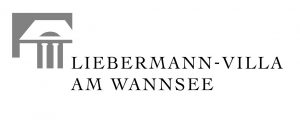Early twentieth-century Germany was a site of extremes, in which art and architectural production were entangled in the swiftly changing political and social landscape. Radical utopias and pragmatic solutions for art and life were proposed, creating a crossroads of unparalleled burgeoning cultural outpouring in the midst of extreme politics. Britain in the same period could be characterized as comparatively stable, a nation often wedded to established traditions in the face of economic, political and social developments. Yet throughout the period, there remained a lively interchange between the two countries. This conference proposes to look anew at the complicated and entangled cultural relationship between Britain and Germany in the first decades of the twentieth century.
With the end of the First World War, Britain was in the position of victor – yet it was Germany which was given the opportunity to forge a new society and a progressive republic, in which culture was to play a central role. The foundation of the Bauhaus in 1919 became perhaps the most influential articulation of this new optimism – distinctly German, it was nonetheless born from both British Arts and Crafts ideas and a desire to answer British nineteenth-century industrial dominance, as displayed at the Great Exhibition of 1851. During the 1920s and ‘30s, British figures from both ends of the political spectrum were drawn to Germany for inspiration. Many from the British art world were fascinated by Germany’s Weimar Republic, with its breaking down of social, cultural and artistic barriers. In the following decade, many in Britain were intrigued by the new National Socialist regime. With the arrival of émigrés fleeing Hitler in the years after 1933, Britain was exposed to a cross-section of German culture, in particular modernism. Britons and international artists – not limited to those holding German passports, but including those who had worked there – formed new groups and collaborations. By 1939 the countries were once again at war. Following World War II, modernism in Britain flourished in the arts with renewed vigour. The Festival of Britain in 1951, in which many of the German émigrés who had settled in Britain were involved, marked a high point of modernism in London.
This conference sets out to explore the connections between British and German culture during the period 1919-1951, in the fields of art, architecture, design and craft, photography, art history and theory, and art pedagogy. How did the British learn from and influence the Germans in these areas? How did the Germans learn from and influence the British? And what is the significance of these cultural connections today?
The conference is being organised on the occasion of the London 1938 exhibition project at the Wiener Library in London (13 June to 31 August 2018) and the Liebermann-Villa am Wannsee in Berlin (7 October 2018 to 14 January 2019).









